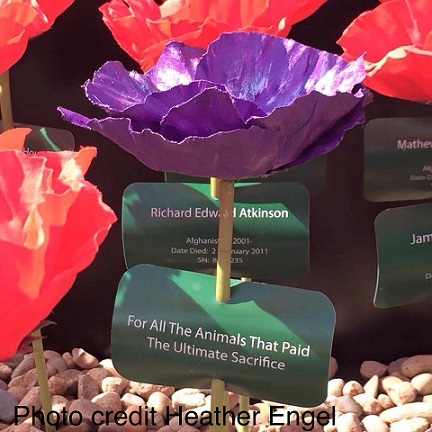They shall grow not old
as we that are left grow old;
Age shall not weary them,
nor the years condemn.
At the going down of the sun
and in the morning
We will remember them.
As we commemorate ANZAC Day and honour the brave soldiers who served, we should also remember the invaluable contributions of another group of unsung heroes – the dogs of war. These loyal canines played a vital role on the battlefield, serving as messengers, sentries, and even casualty dogs, saving countless lives amidst the chaos and brutality of combat.
The Advent of War Dogs
The use of dogs in warfare can be traced back to ancient times, but it was during World War 1 that their role became truly formalised and recognised. As the conflict raged across Europe, military leaders quickly realised the immense potential of these four-legged soldiers, whose keen senses, agility, and unwavering loyalty made them indispensable assets on the front lines.
Among the first nations to embrace the use of war dogs were the Allied forces, including the legendary ANZAC troops. Faced with the daunting task of battling in the harsh, unforgiving terrain of Gallipoli and the Western Front, these soldiers found invaluable allies in the dogs that accompanied them.
Messengers of Hope: Dogs as Couriers
One of the most vital roles played by dogs during World War 1 was that of a messenger. In an era before modern communication technologies, these canine couriers were instrumental in relaying critical information and orders across the treacherous battlefield.
Equipped with specially designed messenger bags or harnesses, these dogs would brave enemy fire, navigate through trenches and shell craters, and traverse miles of hostile territory to deliver their all-important dispatches. Their speed, agility, and ability to navigate terrain impassable to humans made them far more efficient and reliable than human runners or traditional communication methods.
The stories of these brave messenger dogs are the stuff of legend. Caesar was a beloved messenger dog. Some sources say he served with the Australian Imperial Force, others that he served with our NZ brothers and sisters. Regardless, he is an ANZAC and renowned for his unwavering courage and determination. Caesar was responsible for delivering countless messages under enemy fire, playing a pivotal role in saving the lives of his human comrades.
Sentries and Scouts: Dogs on the Front Lines
Beyond their duties as messengers, dogs also played a crucial role as sentries and scouts, using their incredible senses of smell and hearing to detect enemy movements and warn of impending attacks.
These highly trained canine soldiers were often deployed ahead of human troops, their acute olfactory abilities allowing them to sniff out hidden enemy positions, booby traps, and even underground tunnels – a vital asset in the trench warfare that characterised much of World War 1.
The ANZAC forces relied heavily on the keen senses of their canine scouts and sentries and were invaluable in detecting enemy movements and warning of impending attacks, undoubtedly saving countless lives in the process.
Casualty Dogs: Furry Angels on the Battlefield
Perhaps one of the most poignant roles played by dogs during World War 1 was that of a casualty dog. These specially trained canines were tasked with locating and rendering aid to wounded soldiers on the battlefield, often braving heavy enemy fire and treacherous conditions to fulfill their life-saving duties.
Equipped with medical supplies, these canine medics would search tirelessly for injured troops, providing vital assistance until human medics could arrive. Their ability to navigate the chaotic battlefields and locate casualties faster than their human counterparts made them an invaluable asset, particularly in the aftermath of intense engagements.
The Legacy of War Dogs
As we reflect on the sacrifices made by those whom have served, it is essential to recognise the contributions of these remarkable canine soldiers. Their unwavering courage, loyalty, and selflessness in the face of unimaginable horrors are a testament to the enduring bond between humans and their four-legged companions.
Today, the legacy of these war dogs lives on, serving as a reminder of the invaluable role animals have played throughout history’s conflicts. From the messenger pigeons of World War 1 to the modern-day military working dogs that assist in counter-terrorism and counter-insurgency operations, these animals continue to stand alongside their human counterparts, embodying the spirit of bravery and sacrifice that defined the ANZAC troops and their canine comrades.
If you’d like to know more about the animals who served during World War 1, I encourage you to read “Animals in the Military during World War 1” https://anzacportal.dva.gov.au/wars-and-missions/ww1/military-organisation/animals-in-military
As we honour the memory of those who served and those who have fallen, let us also pay tribute to the unsung heroes – the dogs of war whose unwavering loyalty and service saved countless lives amidst the chaos and brutality of combat. Their stories, forever etched in the annals of history, remind us of the profound impact that these four-legged companions can have, even in the darkest of times. Let us also pay tribute to the pigeons, horses, donkeys, mules, camels and cats and other animals who served and saved lives.
To all whom have served; winged, 4 legged and 2 legged. Thank you.
We will remember them
Lest we forget
Hxx


